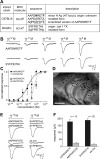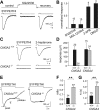Essential role of the main olfactory system in social recognition of major histocompatibility complex peptide ligands
- PMID: 16481428
- PMCID: PMC6674934
- DOI: 10.1523/JNEUROSCI.4939-05.2006
Essential role of the main olfactory system in social recognition of major histocompatibility complex peptide ligands
Abstract
Genes of the major histocompatibility complex (MHC), which play a critical role in immune recognition, influence mating preference and other social behaviors in fish, mice, and humans via chemical signals. The cellular and molecular mechanisms by which this occurs and the nature of these chemosignals remain unclear. In contrast to the widely held view that olfactory sensory neurons (OSNs) in the main olfactory epithelium (MOE) are stimulated by volatile chemosignals only, we show here that nonvolatile immune system molecules function as olfactory cues in the mammalian MOE. Using mice with targeted deletions in selected signal transduction genes (CNGA2, CNGA4), we used a combination of dye tracing, electrophysiological, Ca2+ imaging, and behavioral approaches to demonstrate that nonvolatile MHC class I peptides activate subsets of OSNs at subnanomolar concentrations in vitro and affect social preference of male mice in vivo. Both effects depend on the cyclic nucleotide-gated (CNG) channel gene CNGA2, the function of which in the nose is unique to the main population of OSNs. Disruption of the modulatory CNGA4 channel subunit reveals a profound defect in adaptation of peptide-evoked potentials in the MOE. Because sensory neurons in the vomeronasal organ (VNO) also respond to MHC peptides but do not express CNGA2, distinct mechanisms are used by the mammalian main and accessory olfactory systems for the detection of MHC peptide ligands. These results suggest a general role for MHC peptides in chemical communication even in those vertebrates that lack a functional VNO.
Figures






References
-
- Beauchamp GK, Yamazaki K (2003). Chemical signalling in mice. Biochem Soc Trans 31:147–151. - PubMed
-
- Boehm T, Zufall F (2006). MHC peptides and the sensory evaluation of genotype. Trends Neurosci in press. - PubMed
-
- Boehm T, Bleul CC, Schorpp M (2003). Genetic dissection of thymus development in mouse and zebrafish. Immunol Rev 195:15–27. - PubMed
-
- Boschat C, Pélofi C, Randin O, Roppolo D, Lüscher C, Broillet MC, Rodriguez I (2002). Pheromone detection mediated by a V1r vomeronasal receptor. Nat Neurosci 5:1261–1262. - PubMed
-
- Bozza T, McGann JP, Mombaerts P, Wachowiak M (2004). In vivo imaging of neuronal activity by targeted expression of a genetically encoded probe in the mouse. Neuron 42:9–21. - PubMed
Publication types
MeSH terms
Substances
LinkOut - more resources
Full Text Sources
Research Materials
Miscellaneous
